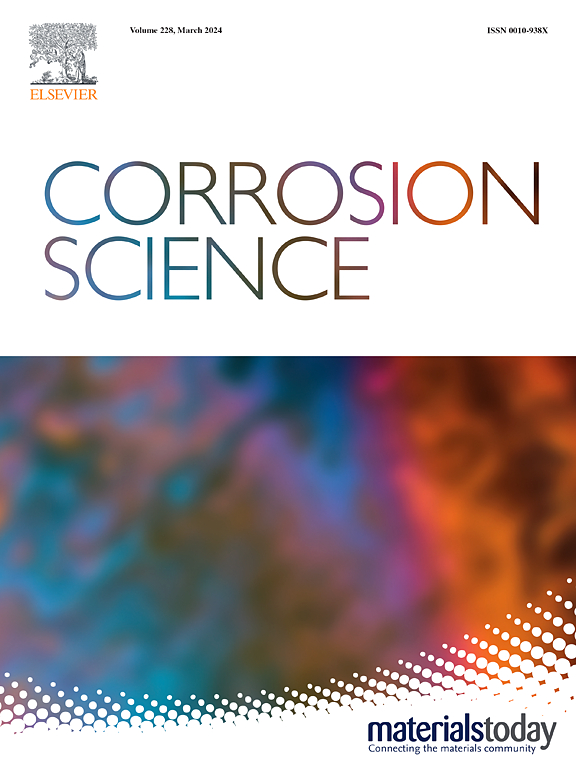New insights from crystallography into the effect of boundaries on hydrogen embrittlement susceptibility of a 1000 MPa grade heavy gauge high-strength low-alloy steel
IF 7.4
1区 材料科学
Q1 MATERIALS SCIENCE, MULTIDISCIPLINARY
引用次数: 0
Abstract
The present study examines the impact of different types of boundaries on hydrogen embrittlement in a bainitic steel. Different grain boundary distributions were obtained by austenitizing the steel at 1050°C and 950°C, respectively. The decrease in austenitization temperature refines the prior austenite grain, and leads to a higher density of prior austenite grain boundaries (PAGBs) and high-angle packet boundaries (HAPBs), while showing a lower density of block boundaries (BBs). PAGBs and HAPBs, due to their high overall misorientation angle (OMA), possess strong hydrogen-trapping capabilities. Owing to the high specific misorientation angles between {110} slip planes ({110}-SMA) of the adjacent sub-volumes, these boundaries significantly impede the movement of dislocation carrying hydrogen atoms, thereby facilitating the hydrogen enrichment at these boundaries. As a result, a higher density of PAGBs and HAPBs means a reduced hydrogen concentration per unit boundary area, which leads to a decreased susceptibility to hydrogen embrittlement. On the other hand, BBs exhibit high OMA but low {110}-SMA. Therefore, they do not impede dislocation movement significantly. Meanwhile, the majority of BBs are Σ3 boundaries, which have weak hydrogen-trapping capacity and serve as rapid diffusion channels for hydrogen. As a result, hydrogen atoms do not accumulate at Σ3 boundaries but rather accumulate at other boundaries in their vicinity. This work provides a new insight into the effect of different types of grain boundaries on hydrogen diffusion and hydrogen trapping efficacy and offers an approach for grain boundary design to alleviate hydrogen embrittlement in bainitic/martensitic steels.
求助全文
约1分钟内获得全文
求助全文
来源期刊

Corrosion Science
工程技术-材料科学:综合
CiteScore
13.60
自引率
18.10%
发文量
763
审稿时长
46 days
期刊介绍:
Corrosion occurrence and its practical control encompass a vast array of scientific knowledge. Corrosion Science endeavors to serve as the conduit for the exchange of ideas, developments, and research across all facets of this field, encompassing both metallic and non-metallic corrosion. The scope of this international journal is broad and inclusive. Published papers span from highly theoretical inquiries to essentially practical applications, covering diverse areas such as high-temperature oxidation, passivity, anodic oxidation, biochemical corrosion, stress corrosion cracking, and corrosion control mechanisms and methodologies.
This journal publishes original papers and critical reviews across the spectrum of pure and applied corrosion, material degradation, and surface science and engineering. It serves as a crucial link connecting metallurgists, materials scientists, and researchers investigating corrosion and degradation phenomena. Join us in advancing knowledge and understanding in the vital field of corrosion science.
 求助内容:
求助内容: 应助结果提醒方式:
应助结果提醒方式:


